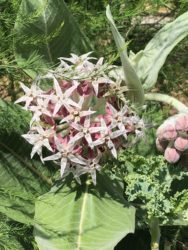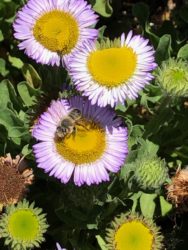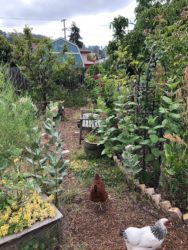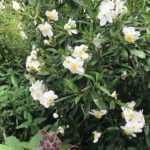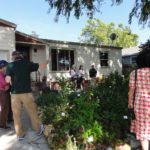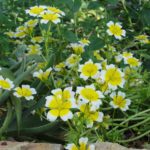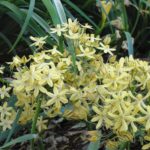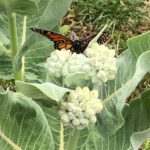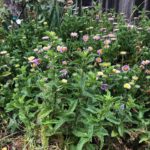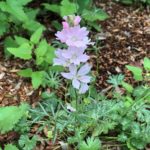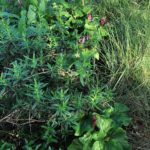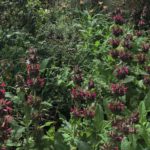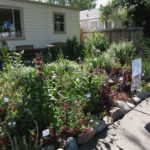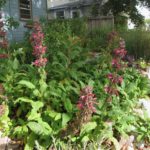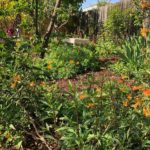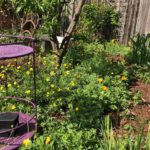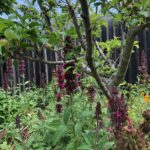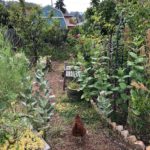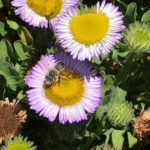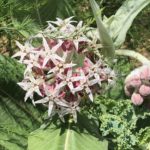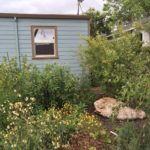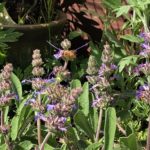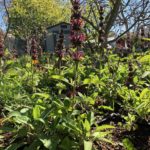Lot size: 750 sq. ft. front garden and 280 sq. ft. parking strip, 95% native
Garden Age: Garden was installed in 2008
Years on the Bringing Back the Natives Garden Tour: 6
Showcase Feature
This low-maintenance, drought-tolerant woodland garden, designed by Donna and installed by Donna and her husband, Jim, features many of their favorite plants, some of which are from the local watershed. Slow-growing perennials and shrubs form the structure of the garden. At the same time, natural succession and self-sowing wildflowers and bunchgrasses bring an element of surprise, create an ever-changing landscape, and provide opportunities to learn new things about the garden. Rooftop downspouts discharge into a decomposed granite pathway, which overflows into the garden. This retains rainwater onsite, protecting the local creek by reducing the erosive impact of storm water. Soil removed for the path construction was used to create mounds, which increases water infiltration and adds depth to the garden.
Donna’s back yard is designed as an urban farm. Fruit and nut trees, berries, and raised beds for growing vegetables and herbs are combined with pollinator-attracting native plants. Interplanting native plants loved by bees and other pollinators with edibles improves the quality and quantity of the crop yields. This practice also attracts beneficial insects, which prey on crop-eating pests, and is part of Donna’s integrated pest management strategy. As part of the urban farm, Donna is also exploring using native plants such golden current, serviceberry, huckleberry, and self-heal for culinary use.
- Year-round interest is provided by a variety of bunchgrasses, perennials, shrubs, and wildflowers that bloom throughout the year.
- Plants with fragrant flowers or foliage, such as native rose, coyote mint, and pitcher sage, appeal to the senses.
- The garden rock-bordered design reflects an appreciation of California’s geology (and provides a place for Donna’s rock collection).
Fescues, rushes, flowering currants, monkeyflower, hummingbird sage, buckwheat, bee plant, gilia, and phacelia provide seeds, nectar, and nesting materials for a variety of birds (including flocks of oak titmice, which are on the Audubon Society’s WatchList, meaning they are in need of immediate conservation help) and native bees. Watering the garden by hand (about once a month in the summer) provides the opportunity to look for sleeping bees.
Many people don’t know that without caterpillars, we will have no baby birds. Almost all baby birds must have caterpillars—thousands of them—while they are in the nest. These caterpillars come from the eggs laid by butterflies and moths, which will only lay their eggs on certain plants, called larval host plants.
Larval host plants in Donna’s garden include currants, California lilac, snowberry, phacelia, Douglas iris, hound’s tongue and larkspur. Watch this terrific talk by Douglas Tallamy to learn more about plants that attract butterflies and moths.
Videos
“Donna Bodine’s native plant front garden” by Donna Bodine
“Combining natives & edibles” by Donna Bodine


